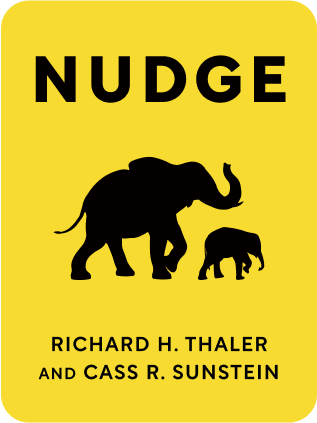

This article is an excerpt from the Shortform summary of "Nudge" by Richard H. Thaler and Cass R. Sunstein. Shortform has the world's best summaries of books you should be reading.
Like this article? Sign up for a free trial here .
What is government intervention? How can it be used without taking away freedom of choice?
Government intervention is any action taken by the government to change what happens in a free market. Where the market methods lead to undesirable outcomes, the government can step in.
Read more about government intervention and what it might look like.
Government Intervention
When it comes to life-threatening temptations—smoking, drug use, drunk driving—people susceptible to those temptations may want the government to help them control themselves.
There are many levers a government can use to rein in dangerous behaviors. So-called “Sin” taxes, for example, on items like cigarettes and alcohol, are one; outright bans, like those on recreational drugs, are another.
Improving Incentives
The best mechanism for harnessing the power of market incentives to reduce environmental damage is so-called “cap-and-trade.”
In this type of government intervention, the government sets a ceiling on a certain pollutant—say, atmospheric carbon—and confers on industries and firms “rights” to pollute up to that amount (the “cap”). If a firm chooses to reduce its emissions, it can trade its “right to pollute” to another company for cash. This system conforms to libertarian paternalism because it preserves choice while “nudging” firms—through economic incentives—to clean up their operations.
A cap-and-trade system has been enormously effective in curbing acid rain. In 1990, George H.W. Bush amended the Clean Air Act to allow companies to (1) pollute in certain amounts and (2) trade those allowances in a market. With a clear economic incentive in place—cash for less pollution—companies began reforming their operations on their own, to reduce emissions and reap the benefits of cleared-out cap space. The program has resulted in benefits of between $12 billion and $78 billion, amounts which include a reduction of 10,000 premature deaths and over 14,500 cases of chronic bronchitis.
Improving Feedback
A noninvasive means to better informing the public of environmental costs is strengthening the disclosure requirements for firms. The evidence shows that even in the absence of explicit emissions caps or regulations, a government intervention that mandates firms track and publicly disclose the environmental impacts of their business activities has significant corrective effects.
The Emergency Planning and Community Right to Know Act, enacted by the US Congress in 1986 in the aftermath of the Chernobyl disaster in Ukraine, is a case in point. The statute requires firms to disclose publicly the types and amounts of toxic chemicals they’re either storing or releasing into the environment. This data is then compiled in the Toxic Release Inventory (which can be found on the Environmental Protection Agency’s website). Even though the Inventory is essentially a bookkeeping effort—that is, no punishments are triggered by firms’ disclosures—it has resulted in large reductions in toxic chemical releases. This is because major polluters are “blacklisted” by environmental groups, resulting in bad publicity and reduced revenues. Essentially, lists like these work as a social nudge, pushing companies toward more environmentally-conscious practices.
To combat climate change, for example, using the nudge of better feedback, governments could create a “Greenhouse Gas Inventory” that records data from the largest emitters. Another possibility is to mandate that cars feature a sticker that reports their fuel economy and average annual gas costs—the idea being that people will be less inclined to buy gas guzzlers when they have to advertise how (in)efficient their car is.
An even bolder application of this kind of government intervention or nudge would find it curtailing individuals’ energy use. One idea is to give individuals constant feedback on their energy use—one researcher used an “Ambient Orb” that glowed green when energy use was low, red when energy use was high—and then to facilitate the public sharing of that information, perhaps via social media or an online registry. That way, individuals could compare their energy use with others and “compete” to be the most energy-efficient.
Alternative to Government Intervention: Market Methods
The private sector too can benefit Planners in their battle against Doers with market methods.
One example is the Christmas Club savings account, which saves Doers from not having enough money for Christmas giving. Depositors open the account around Thanksgiving and commit themselves to small weekly deposits throughout the year. The money can only be withdrawn the following year at Christmas time, thereby guaranteeing the depositor a pool of funds for buying gifts or donating to charity.
(Of course, the private sector is as happy to enable Doers as help Planners. While banks offer Christmas Clubs to help Planners save, they also offer credit cards at high interest rates, which can really get an impulse-buying Doer into trouble.)

———End of Preview———
Like what you just read? Read the rest of the world's best summary of Richard H. Thaler and Cass R. Sunstein's "Nudge" at Shortform .
Here's what you'll find in our full Nudge summary :
- Why subtle changes, like switching the order of two choices, can dramatically change your response
- How to increase the organ donation rate by over 50% through one simple change
- The best way for society to balance individual freedom with social welfare






